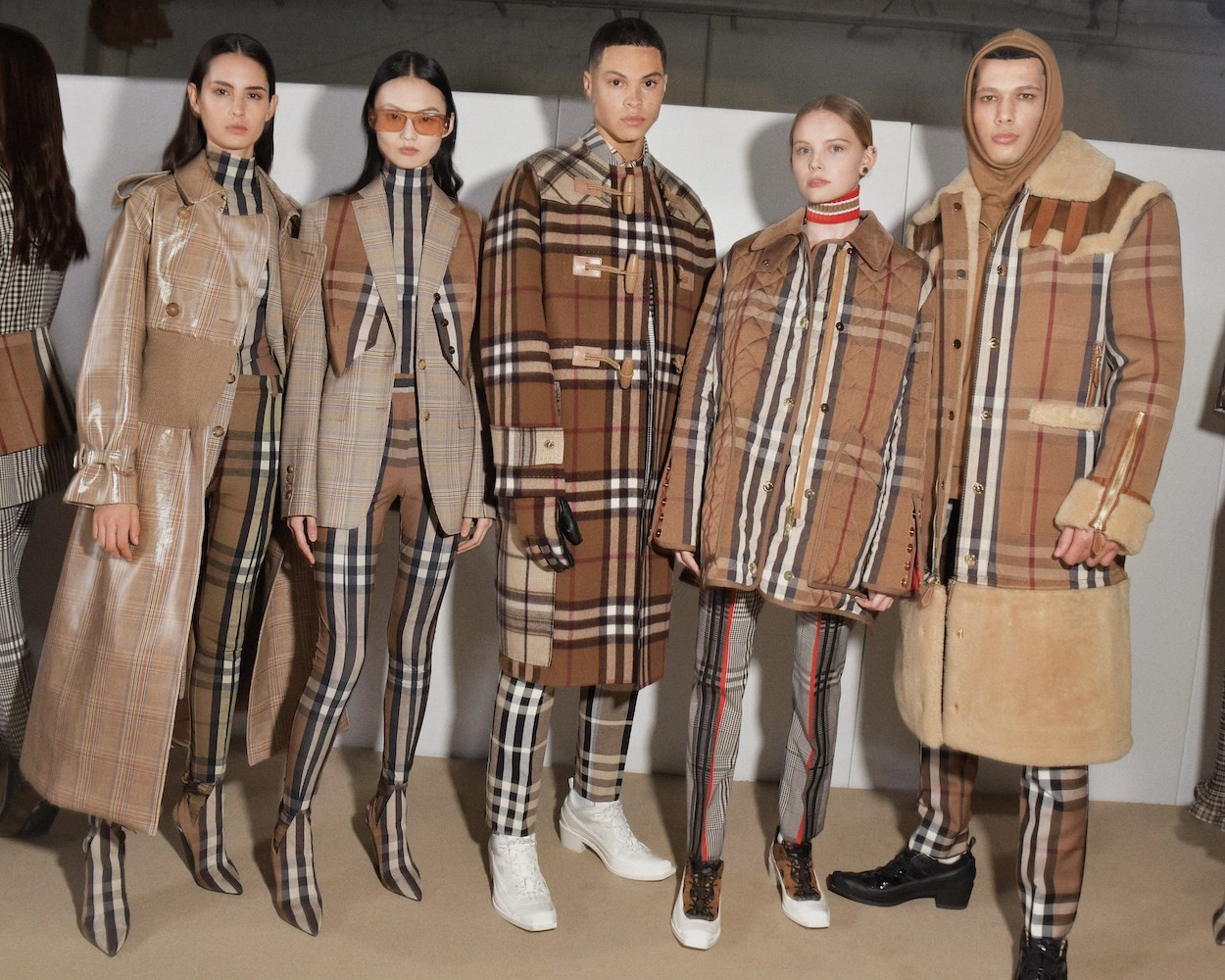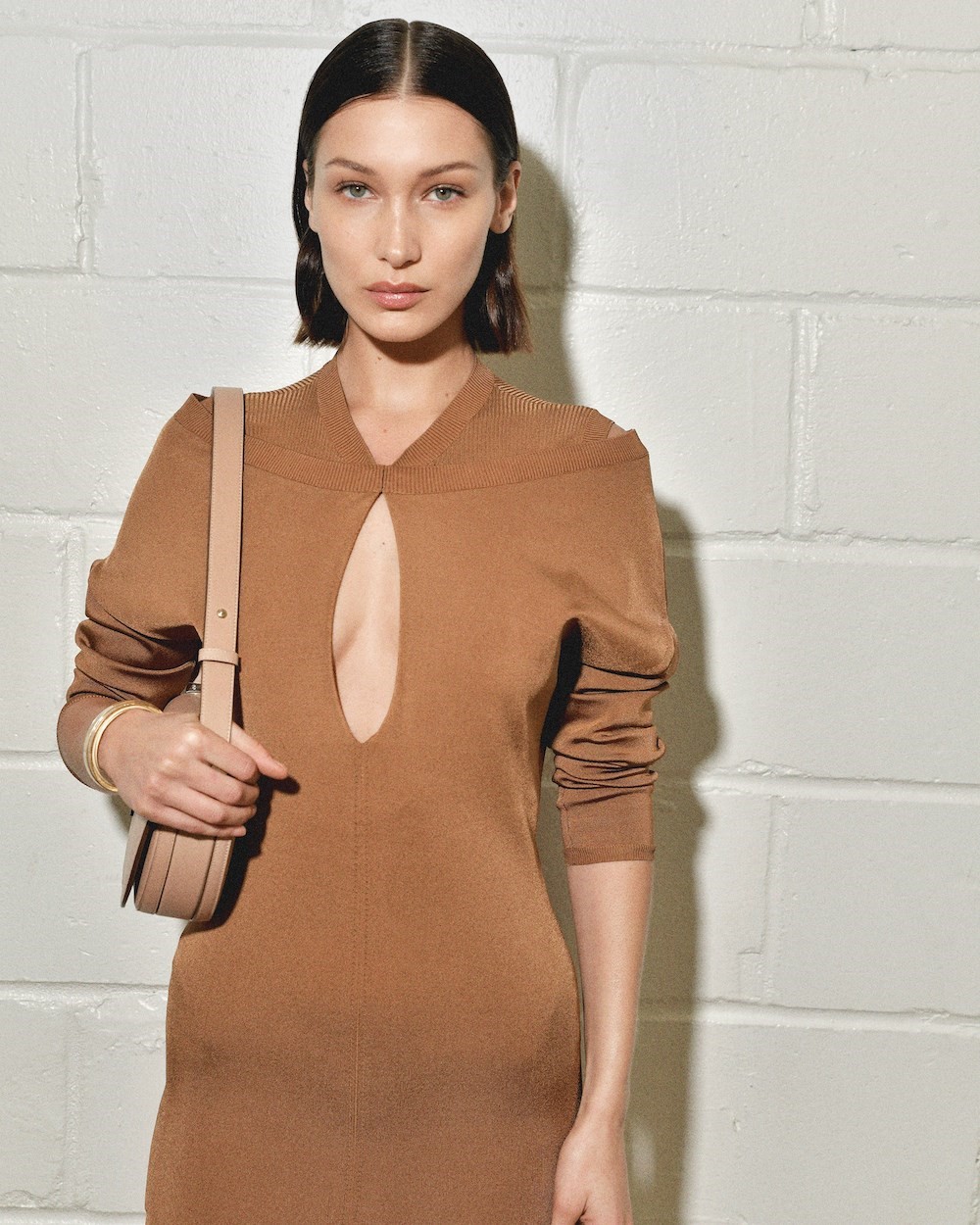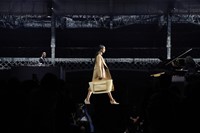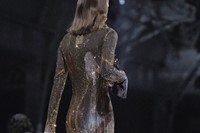Memory is powerful stuff – the misty, water-coloured type, and the remembrance of things past. Both have inspired fashion powerfully – no wonder Yves Saint Laurent was enamoured with Marcel Proust’s magnum opus. He, like so many designers, created his most powerful and enduring imagery based on recollections of how his mother dressed when he was a child. Ditto Dior; and ditto Tom Ford and his slinky 70s Halstonite looks. Yet fashion often relies on amnesia, the wiping clean of design identity as names shift from house to house. But not so with Riccardo Tisci – coming to Burberry, he not only absorbed the influences of 165 years of history, but he brought some of his own to the table. His latest Burberry collection, for Autumn/Winter 2020, was titled Memories. “Moving back to London recently – a city I first discovered as a young student – gave me a real sense of nostalgia,” Tisci said of this show. “It was the place where I learnt to be myself.”
Accordingly, this was the Burberry collection that, arguably, best melded together Tisci of old with Burberry of new, underscoring aesthetic codes recognisably his – fittingly, it was most evident in the Burberry trench coat, a historical house archetype if ever there was one. Tisci cut them to drape easily at the neckline, or swathed them with chiffon – memories of his years in haute couture, the introduction to the faultless craftsmanship which would have a formative effect on any sensitive designer. There’s memory again: in a sense, couture is a living memory, a means of making clothes that connect today with the past with the storied traditions of Saint Laurent and Dior and, further back, to Marie Antoinette. Of course, it’s evolved since then, but much of the methodology carries traces of those antecedents. That’s why it’s precious – and why a designer like Tisci can’t help but remember it, instinctively.
Tisci’s Burberry show ran to over 100 outfits – which, in and of itself, was like a memory gain. It’s also clever business: they came out at a pace which gave an immediate impression, leaving the subtle details and nuances to be discovered when garments are hanging on a rail, ready to be bought. It’s a way of addressing the paradox of then and now, and consumer fatigue – when fashion becomes omnipresent, how can we ensure we don’t become immune to its charms? Rather, this fashion show left you with an impression, a point of view for the season – an opinion. It embedded in your memory – attitudes, colours. Burberry beige, of course, but also a verdant field-green, a mercurial silver, rich ochre and burgundies, echoes of near-forgotten school uniform colours – and the movement of fringe and drapes, a new animation.

Making memories is, arguably, what fashion is about: creating an impression that will last. That is doubly true when a designer steps into the creative stewardship of a heritage house. There, they are not only examining the archive (which Tisci does, with gusto) but adding to it: in creating something new, you’re automatically creating history. And ultimately what Riccardo Tisci is inventing at Burberry will be remembered. A new point of view not only on his memories, or on memories of Burberry, but on our collective recollections of Britishness too. Tisci is pushing those ideas someplace new – and in a cultural moment of dark nationalism, his plurality of vision should be celebrated.






